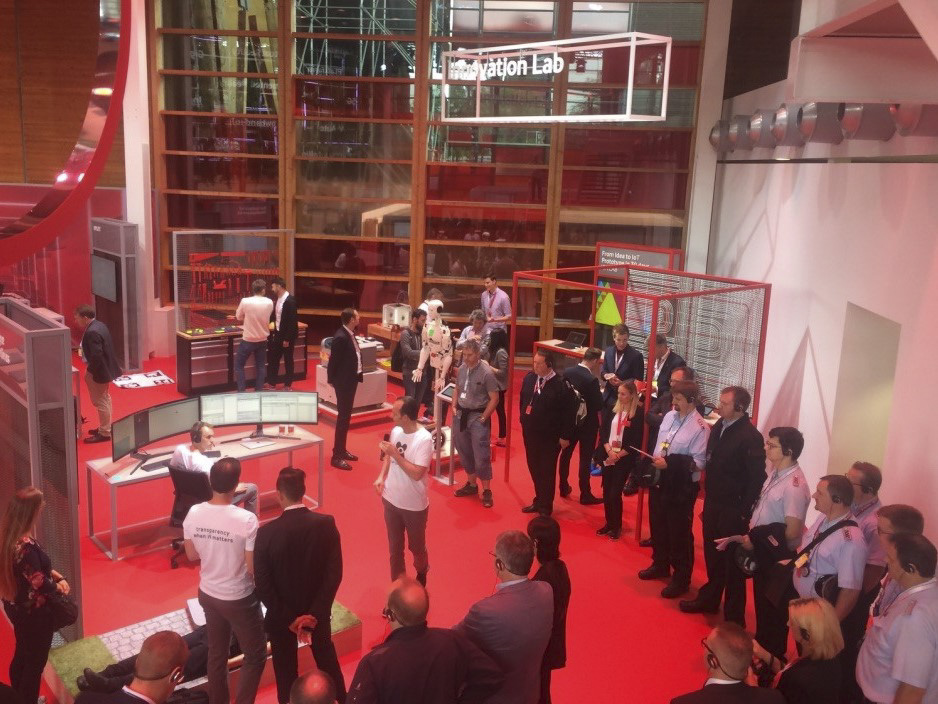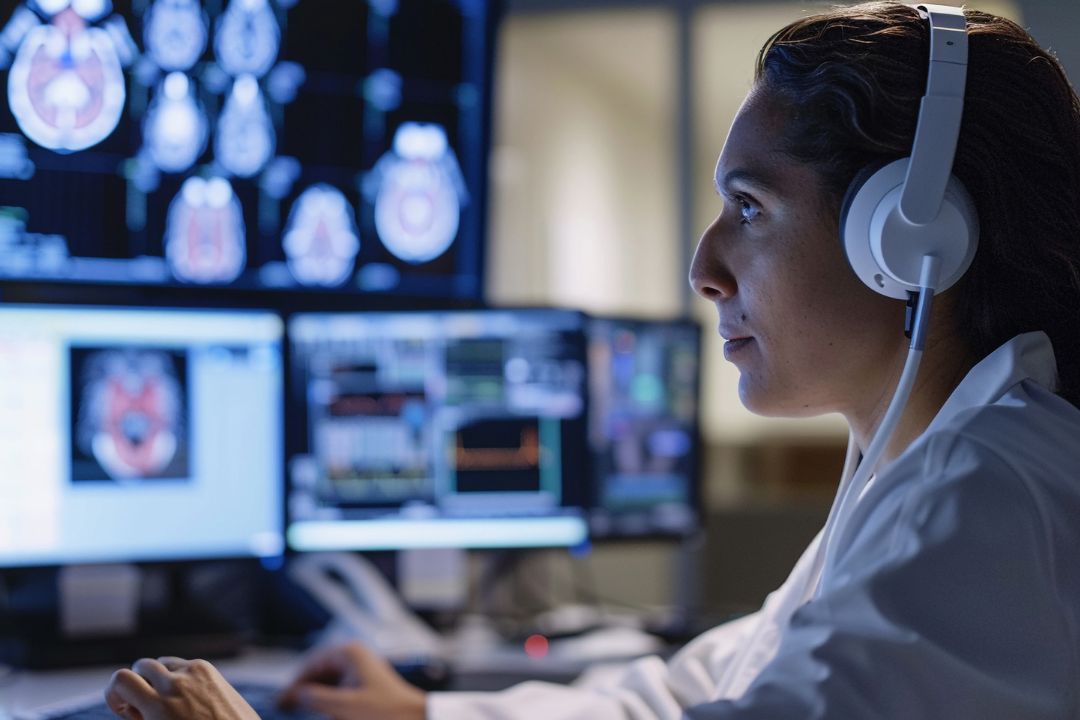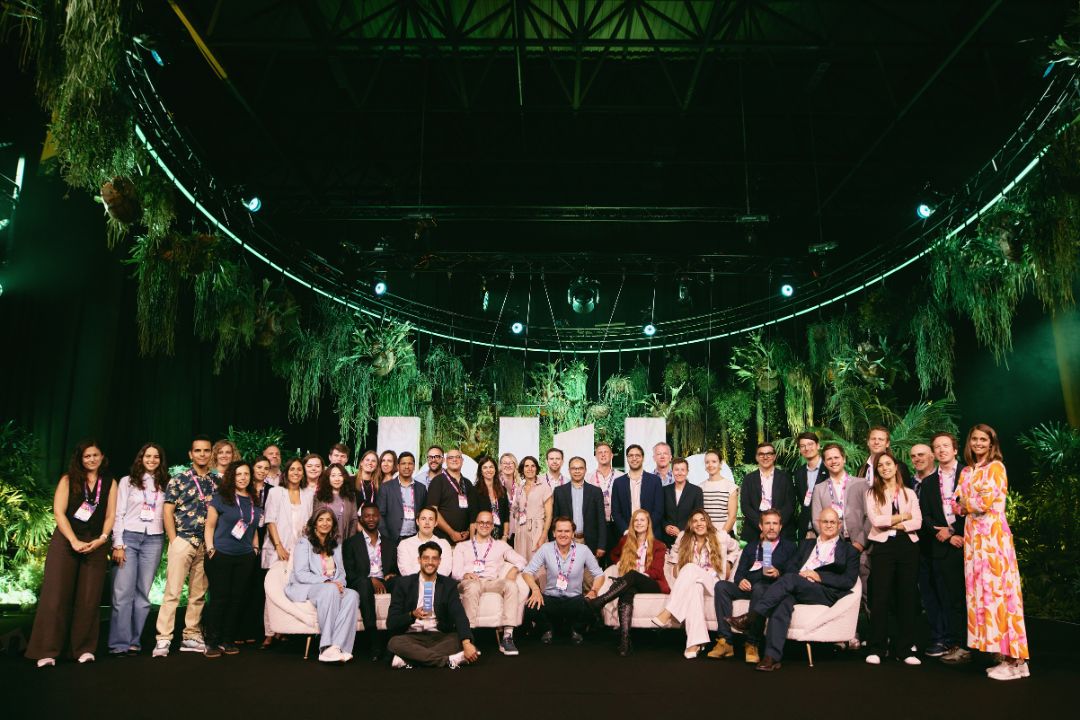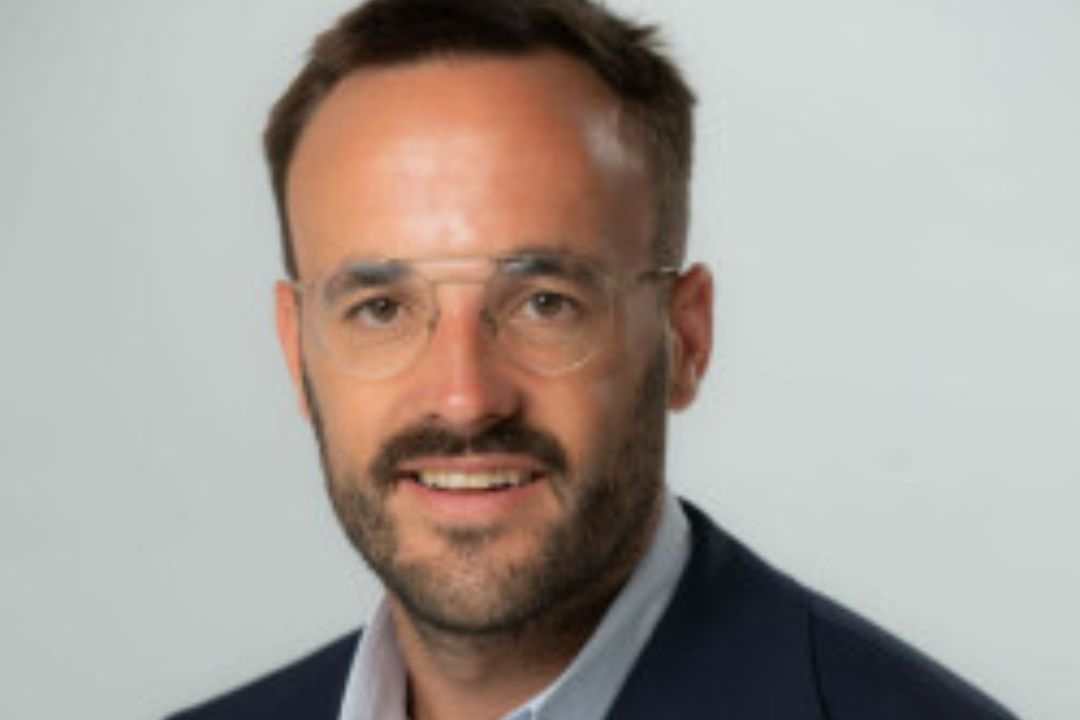9th July 2019
Life-saving technology impresses CEBIT participants
EmergencyEye® the first product developed by the EIT Health RAMSES consortium, was unveiled and shown to the public at the Cebit expo in Hannover on 11-15 June 2018. EmergencyEye® will enable people in health crises and emergency situations to share more comprehensive information including Geo-location and video live streams with professional service organisations and thereby receive timely and improved support and guidance.

Prof. Dr. Guenter Huhle, founder of Corevas GmbH & CO.KG and professional Head of JLABS EMEA, Johnson & Johnson Innovation, together with his team presented EmergencyEye® – a technology and product innovation for managing emergency and crises situations. Corevas have also been invited by Vodafone to join them in the CEBIT Pavillon 32 and present the case of innovation in communication technology.
“We are committed to making the product EmergencyEye® available to people in health crises and emergency situations by end of 2018,″ said Guenter Huhle.
The first ten Emergency case control centres will start testing EmergencEye® by July 2018. The official launch in Germany is expected in the 4th Quarter this year.
The Corevas team received overwhelmingly positive feedback for EmergencyEye® not only from professional emergency case service providers but also from potential business partners who see in EmergencyEye® an innovation that can revolutionalise crises communication and visually enrich service optimisation for professional service providers.
The EU-commissioned EIT Health Initiative has been supporting the development of EmergencyEye®, a technology that will reliably guarantee remote access to smartphone-based information and functions in health crises and emergency situations.
The leading partner of Corevas GmbH & CO.KG in the development of EmergencyEye® is the Karlsruhe Institute of Technology (KIT). Other partners and leading international institutions in their fields are the RWTH Aachen University, the University of Cologne and the University Hospital Cologne, the Catholic University of Leuven and the Interuniversity Microelectronics Center in Leuven (imec), the BIO Clustermanagement NRW GmbH, ISE mbH, Liki Mobile Solution and the Nofer Institute in Lodz, Poland.
Click here to read a news article by RP Online about the EmergencyEye performance at the CEBIT expo.
The context:
According to current figures of the German Reanimation Registry, between 30 and 90 people per 100,000 inhabitants suffer from sudden cardiac arrest every year in Germany alone. Less than 10% of these people survive this life-threatening situation, and these numbers have not changed significantly for years. We therefore speak of about 75,000 to 100,000 deaths per year as a result of sudden cardiac arrest or approximately 250 deaths per day in Germany alone.
In particular, in the situation of sudden cardiac arrest, the immediate use and quality of first aid measures has a significant impact on the survival and recovery opportunities of the victim. Currently lay helpers and bystanders use telecommunication technologies to inform emergency call centres by dialing the EU-wide number 112 or local emergency service numbers. In more than 60% of cases smartphones and thus high-performance computers are used for the connection between Emergency control centres. This is exactly where the EmergencyEye® solution, developed by the start-up company Corevas GmbH & Co. KG, aims to improve communication between bystanders and emergency control centres, by using all the technical functionalities of smartphones, in particular the transmission of video and GPS data, up to the transmission of vital sensoric data.
The transmission of this additional information extends the possibility of the diagnosis by the control centre dispatcher and can thus both shorten the reaction time and increase the decision quality on the part of the dispatcher. Furthermore, the improved insight into the event supports the dispatcher’s telephone support of the first responders in case of necessary resuscitation. As the previous use of telephone assisted resuscitation already clearly shows, this telephone support increases the readiness and the success of amateur animation. In addition, the audiovisual connection between the bystander and the control centre dispatcher can be expected to significantly increase the rate of active resuscitation by the emergency witness and improve the chances of survival of people with cardiac arrest.
EmergencyEye® features:
- EmergencyEye® consists of a remote access module that allows the dispatcher to remotely access and control the features of the bystander`s smartphone once bystanders have connected with the dispatch centre.
- EmergencyEye® will not replace the existing emergency call system, but enrich it with already available functionalities of smartphones like geo-location, video and vital sensoric functions.
- EmergencyEye® will be the first system on the market that, in the event of an emergency call via smartphone makes extensive use of its technical capabilities via remote access and will transmit live video and GPS information directly from the emergency location and – with version 2.0 – inform the dispatcher with vital sensoric data from the site of the emergency case. This is currently not available through the purely language-based solutions.
In 2018, Corevas GmbH & Co. KG and the consortium will focus on the development of the technical solution and the technical/Medical scientific evaluation of EmergencyEye®.
Learn more about the product – EmergencyEye®
COREVAS GmbH & CO.KG:
Corevas GmbH & CO.KG was founded in 2015 by Prof. Dr. med. Günter Huhle (physician, scientist and head of International Business Development at Janssen / Johnson & Johnson) and Dipl. Des. Carola Petri (entrepreneur and designer) with the aim of inventing, developing and subsequently marketing products and services that use the opportunities of technological innovation to significantly increase the health of society.
The company prioritises product ideas that can gain social significance. The particular strength of Corevas is the networking and cooperation with various service providers, among others from business, politics and university institutions.
Since mid-2016, under the leadership of Carola Petri as CEO, Corevas has been focusing its activities on the development of the product EmergencyEye® with its six employees. The Corevas team is committed to launching EmergencyEye® in Germany in 2018.
Learn more about Corevas GmbH & CO.KG
Click here for more information on the RAMSES project.
Watch the video below to see how EmergencyEye® works:
New data shows AI innovation needs skills beyond coding

The largest live dataset of AI start-up talent analysed.
Europe's top health start-ups take centre stage: EIT Health Catapult winners are revealed at HLTH Europe

2025 Catapult programme winners announced.
Finding Europe’s next healthtech leaders: Insights from Antoine D’Hollander

Insights from Antoine D’Hollander, Capricorn Partners.